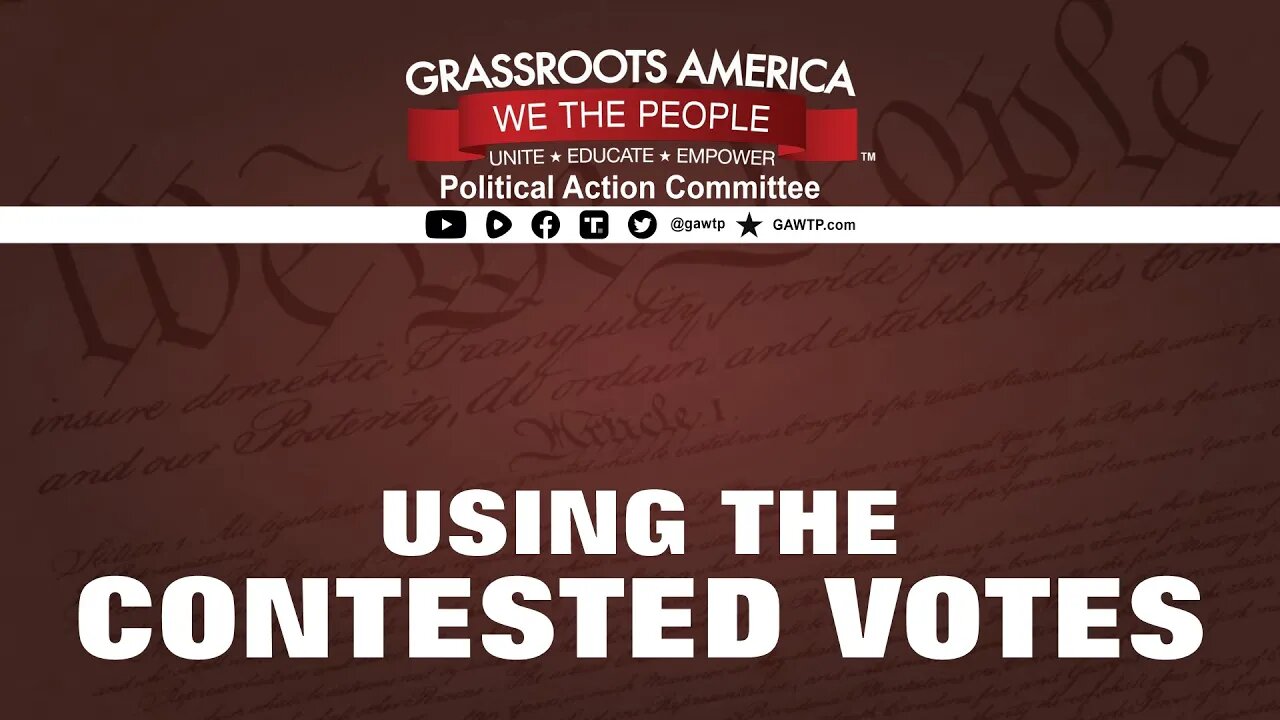Premium Only Content

Using the Contested Votes Feature
A contested, partisan vote is where at least half of one party votes way on a bill and a third of the other party votes the other way.
The question is: does the legislator join their own party or do they vote with the other party?
Some might call this bi-partisanship or crossing the aisle, but any time this happens with our justices on the supreme court, we all feel betrayed. Democrat policies these days seek to reduce our God-given rights and grow government into something it was never intended to be. Feeling betrayed is appropriate at the legislative level just as it is on the court.
To help with this analysis, we color-coded the vote breakdown. Red for Republican and blue for Democrat. The legislator in question is highlighted in yellow to help see which party they joined.
As you scroll down through the votes, you can see the legislator crossing the aisle. For the number of votes where there was this partisan divide, the more often the legislator sided with the other party, that determines the percentage. The higher the percentage, the greater the betrayal.
Texas House Republicans, on average, do this 24% of the time. Democrats, on average, only do this 11% of the time.
-
 33:55
33:55
Grassroots America - We the People
5 months agoUrgent Message from Brandon Burden, JoAnn Fleming, and Abraham George
32 -
 LIVE
LIVE
Film Threat
3 hours agoLIVE FROM SAN DIEGO COMIC-CON! (Thursday) | Film Threat Live
77 watching -
 10:05
10:05
Michael Button
5 hours ago $0.10 earnedGroundbreaking Discovery at Stonehenge Rewrites History
1391 -
 LIVE
LIVE
RalliedLIVE
2 hours ago $1.72 earnedSPECIALIST ADDICTED MAN WINS WARZONE SOLOS
242 watching -
 1:11:41
1:11:41
Sean Unpaved
3 hours agoBat Flips to Boardrooms: Jets QB Crossroads, Presidential Visits, & RedZone's TV Takeover
21.1K -
 LIVE
LIVE
SportsPicks
3 hours agoCrick's Corner: Episode 51
72 watching -
 1:00:45
1:00:45
Russell Brand
4 hours agoUK Migration Clashes ERUPT! Starmer Sweats as ‘SUMMER OF RIOTS’ Begins? - SF620
116K44 -
 16:51
16:51
IsaacButterfield
10 hours agoYou Are Being Watched
9015 -
 15:22
15:22
The Gun Collective
17 hours agoHateful Bigots TRIED to RUIN my GUN EVENT!
6028 -
 34:11
34:11
The Boomer Effect
23 hours agoAI vs. Jobs: Innovation's Greatest Dilemma
10